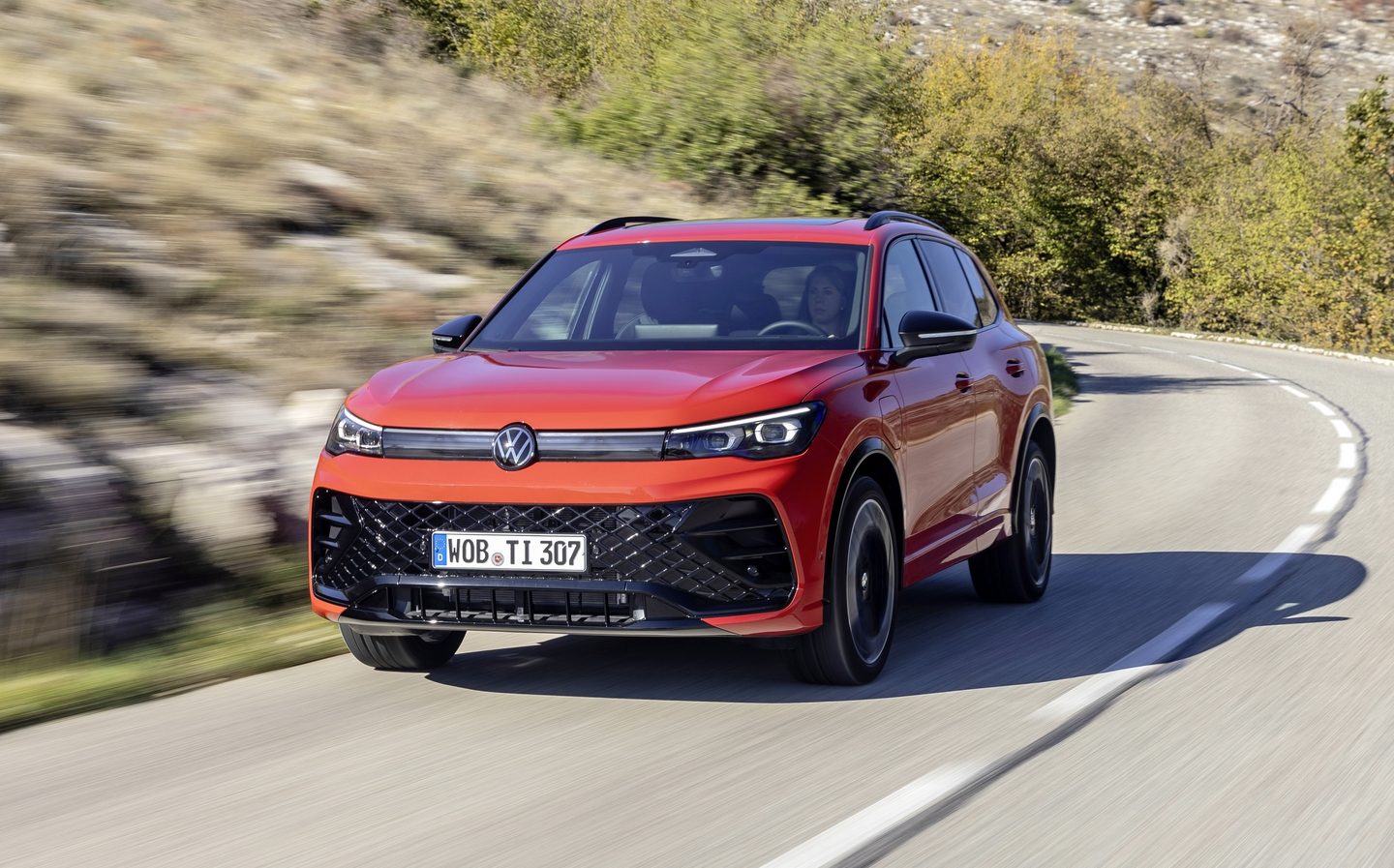Volkswagen Tiguan 2024 review: There's life left in combustion engines for VW's biggest seller
Looks like an electric ID model, but isn't
You might quite rightly be wondering why Volkswagen is launching a new Tiguan fitted with a choice of petrol, diesel and plug-in hybrid engines at a time when the rush to electric vehicles seems unstoppable.
Equally, you might point out that VW already sells the fully electric ID.4 and ID.5 SUVs, both of which can manage a theoretical 300 miles on a charge if you buy one with the bigger battery. If we’re all supposed to be buying electric, why the new Tiguan?
Well, the simple answer is that the Tiguan is currently Volkswagen’s best seller around the world, having taken on that mantle from the immortal Golf hatchback. VW would be shooting itself in the corporate foot if it didn’t chase the buyers still keen on combustion power.
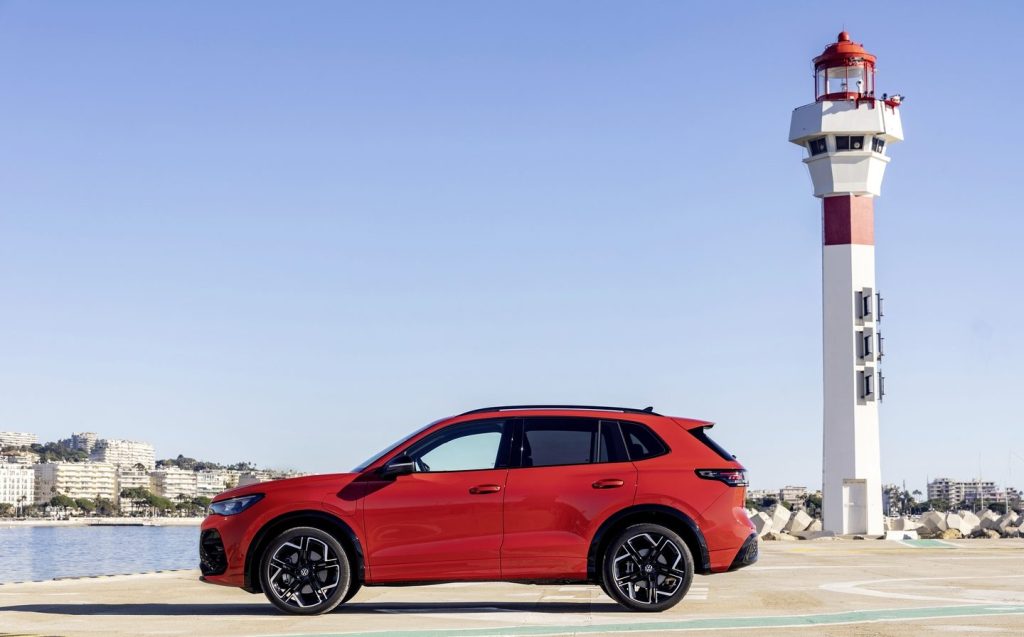
A bumpy transition to electric power
Then there’s the fact that the transition to electric motoring isn’t following a smooth, predictable curve. Electric car sales in December saw a fall of 34 per cent, while diesel sales — smelling salts at the ready — rose by 12 per cent. That doesn’t mean electric car sales are dying, nor that diesel sales are being revived in the long term, but it does mean there are customers out there who are not yet ready for the switchover to fully electric motoring.
Having said all that, the new Tiguan could, effectively, be an electric car for most of its life if you pick the new e-Hybrid model. This plug-in hybrid comes in two versions — with either 201bhp or 258bhp — and both get an engorged 19kWh battery (up from the previous Tiguan e-Hybrid’s 10kWh energy capacity). This means a much more impressive electric range on a full charge of up to 62 miles.
In fact, it might be more than that when it comes to the official efficiency test. Volkswagen is estimating that the final WLTP figure might be closer to 75 miles of electric range, but the company’s engineers are being rightly cautious, and reckon that 62 miles is the more realistic figure buyers can expect.
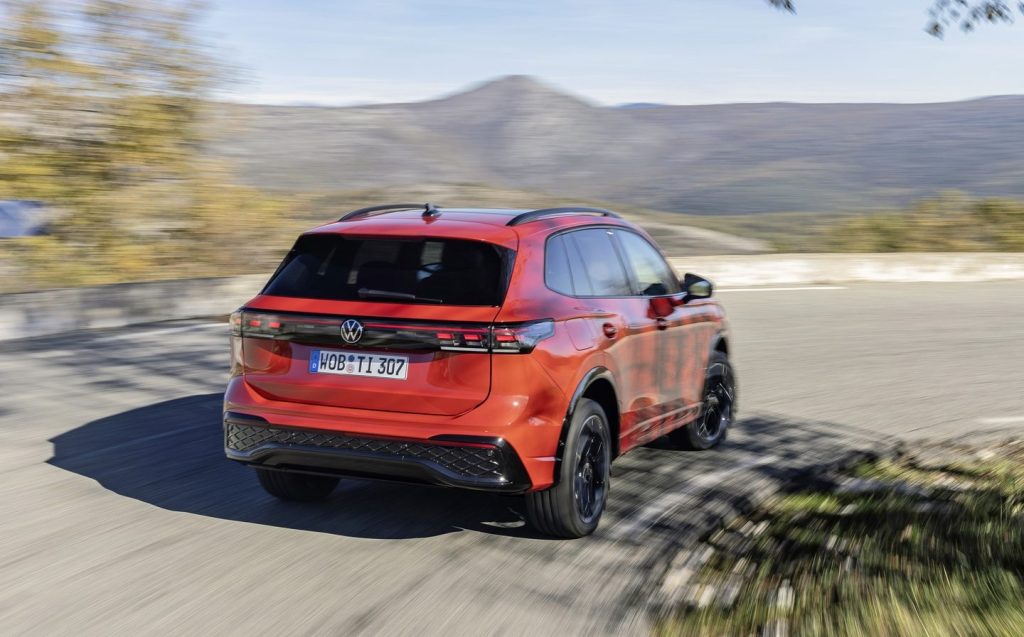
Praise be for managing expectations
It certainly seems to be realistic. Our Tiguan e-Hybrid test car, the 201bhp model, showed that it could manage around 26 miles of electric driving having used 42 per cent of its charge. Not bad, that.
VW’s research suggests that 99 per cent of an average driver’s journeys are less than that 62-mile figure, so there is at least the potential — with due care and attention to keeping it charged up — for this Tiguan to run on electric power most of the time.
It’s easier to charge than before, too. Using AC power (such as when you’re at home or at the kerbside) means charging at up to 11kW — up from a measly 3.7kW for the previous model, resulting in lengthy charging times, even with a teeny battery.
Even better, there now is the ability to fast charge on a DC charging point at up to 50kW, getting you back to 80 per cent full in around 25 minutes.
That’s still 25 minutes during which any driver of a pure-electric car in the vicinity will fill your ears with invective, for hogging “their” public charging points, but still… you’ll be much more swiftly than before, and really that’s an issue of charger availability more than anything.
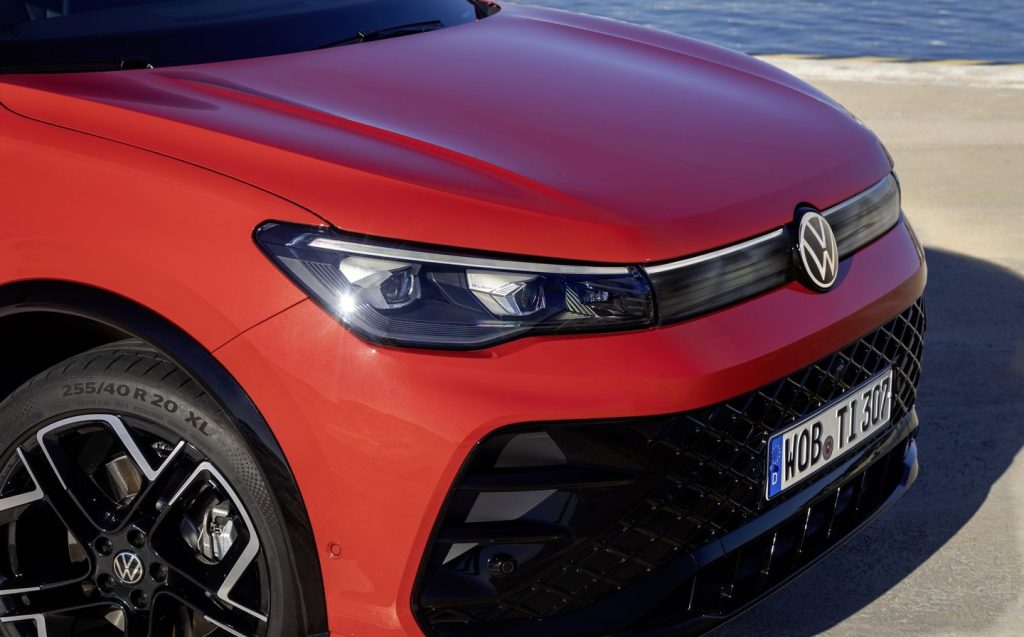
It’s just a pity that the new Tiguan doesn’t look better. There’s been an attempt to give it a family resemblance to the VW ID.4 around the lights and the nose, but the massive front grille makes it look a bit like Batman is trying to wear Bono’s wraparound sunglasses. Aesthetic appeal is subjective but to my eyes, it isn’t an improvement on the previous Tiguan, which had a nicely chiselled look.
High-quality cabin
There are no such complaints about the interior. Both critics and customers have been giving Volkswagen merry hell in recent years about the quality of its cabins (the Golf 8 and the ID.3 especially) and the usefulness of its infotainment screens; some have positively loathed it but most agree the user experience has been less than satisfactory. The updated ID.3 is much better and most would agree the Tiguan’s cabin can be considered a riposte to such complaints.
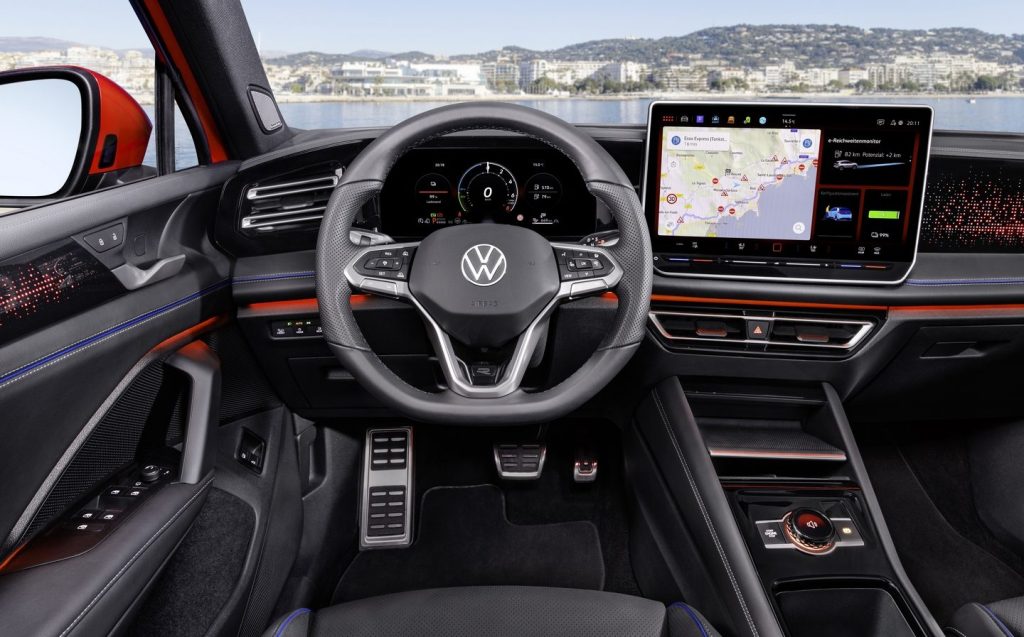
Quality levels seem remarkably high, back up to the good old days of the Mk5 Golf and the sixth generation Passat. Although there are some cheaper plastics to be found in the rear cabin, up front everything looks and feels very nice indeed.
We can’t grumble about storage space, either, and there are now two wireless phone chargers — cooled so that your phone doesn’t heat up to scalding temperatures and destroys its battery. Why isn’t this standard on all wireless chargers?
In the back, there’s more than enough legroom and headroom for even the tallest of adults or teenagers, but the boot in this hybrid version is, at 490 litres, less useful than the 652 litres accommodated by diesel or petrol Tiguans.
In front of the driver is well-specced 10.25in digital instrumentation, while in the centre of the dash is the new touchscreen. This measures a substantial 12.9in across the diagonal as standard, or a whopping 15in as an option. At that size, it’s almost too high in the cabin and occupies a vast acreage just to the side of the steering wheel. But most buyers will believe bigger is better when it comes to screen size.
The arrival of AI
And as touched on above, the Tiguan’s infotainment system does have much better software. VW’s user experience team claim they went back to the drawing board when developinh both this new ‘MIB4’ software and the hardware on which it lives. The result is a success, with faster reaction times and a far more logical menu layout.
Keeping the climate controls always visible on the screen is helpful, as are the customisable shortcut icons at the top. The fiddly ‘slider’ controls for heating and stereo volume, under the screen, remains but at least they light up at night now.
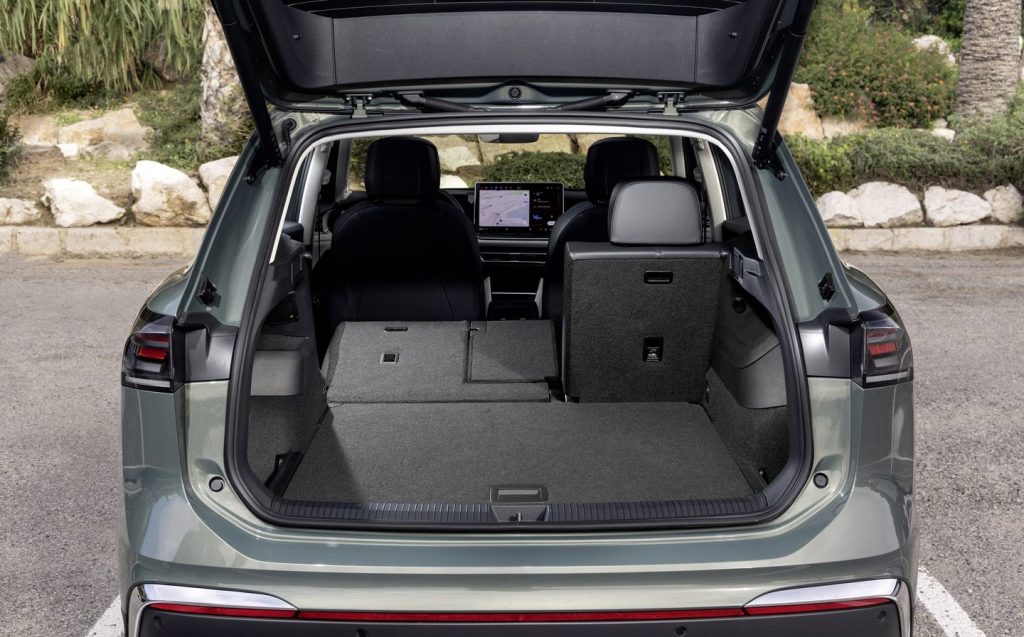
There is also a new physical control in the shape of a rotary switch on the centre console. This is pleasantly tactile, and it controls the stereo volume and selectable driving modes, as well as a new function called “Atmosphere”.
This gimmicky feature alters the cabin lighting, temperature and stereo settings to pre-sets such as “Lounge” or “Joy”, which are meant to either jazz you up or calm you down, depending on your mood. It’s hard to see a truly viable use case for any of this, but at least your kids will play with it a couple of times before getting bored.
When they are beginning to crawl up the side panels, children can ask the Tiguan’s “machine learning” computer to entertain them. Volkswagen is rolling out ChatGPT generative AI to its cars, and the Tiguan is one of the first to get it.
It’s incorporated into the Ida voice control assistant, but it’s purely there for entertainment and doesn’t control any of the car’s systems. VW further reassured us that any of the data generated by using ChatGPT is totally anonymised, and any questions you ask it are instantly deleted once they’ve been answered.
To be honest, getting it to answer anything was an unedifying process, often leading to classic “I’m sorry, I’m not programmed for that” responses, given in a flat, unpleasantly robotic voice. Alan Turing’s tests remain un-passed at this stage anyway.
Comfortable, but not fun
More important is what the Tiguan is like to drive. The answer is fine, but not fun. This is quite a big car now, some 60mm longer than it used to be (hence that ample rear seat space) and weighing almost 1,900kg in hybrid form.
That means performance, even with 201bhp and 258lb ft of torque on tap, is more OK than OMG. It rolls along nicely, with good refinement (at last, no more dreadful tyre noise) and a sense of reasonable agility. But tight corners make for quite a bit of body roll, even with the optional DCC Pro adaptive dampers and their twin-valve technology.
Then again, the decent steering means that you can tuck that big chin (the car’s, not yours…) into a corner neatly enough. Switching to Sport mode helps a bit, too.
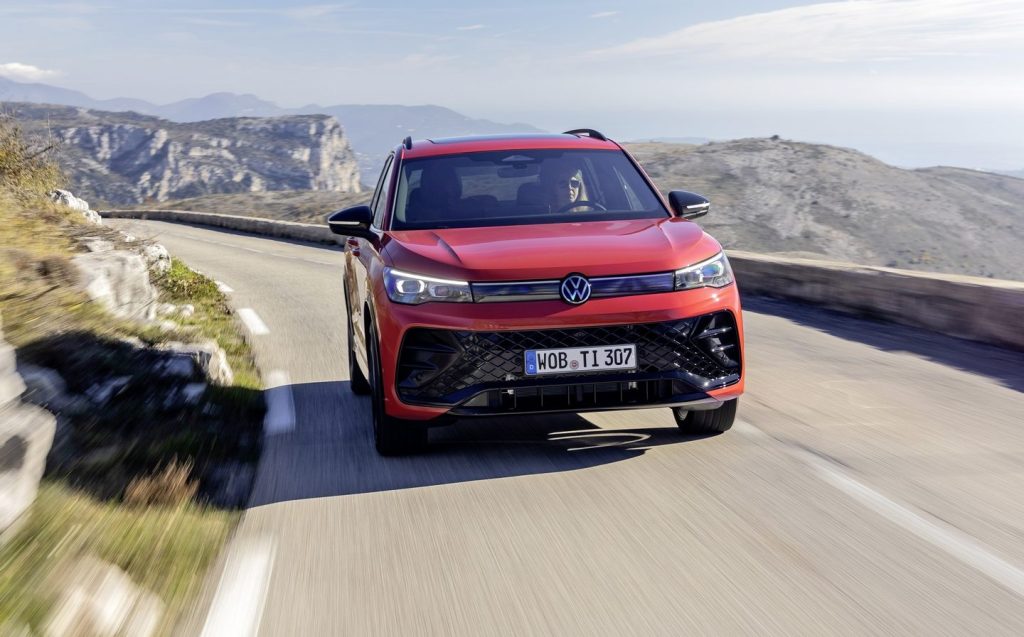
Switch it back to Comfort and seek out a motorway, and the Tiguan genuinely excels. Those front seats, lifted directly from the bigger Touareg, are wonderful (optional heating, cooling and massaging functions help) and with a reasonably smooth ride quality (other than when it has to deal with short, sharp intrusions) the Tiguan effortlessly eats up long journeys.
The e-Hybrid should be fairly good at doing so, as Volkswagen reckons that a full tank and a fully-charged battery will take you some 500-odd miles down the road (400-ish is a more realistic figure).
Meanwhile the simpler 2-litre 148bhp turbodiesel will easily manage 500 miles at a go and stretch to 600 miles if you’re careful, with economy heading for 53mpg on average.
A better bet than an ID.4?
None of this will be cheap, though. If you want a basic 128bhp 1.5 petrol Tiguan, it’s going to cost £34,060 — a price that will have local Hyundai and Kia dealers smacking their lips in anticipation of conquest sales.
R-Line models start at £39,680 and an e-Hybrid such as this, in R-Line spec, is probably going to be close to £45,000. PHEVs from other brands offer much better value, albeit with less electric-only range.
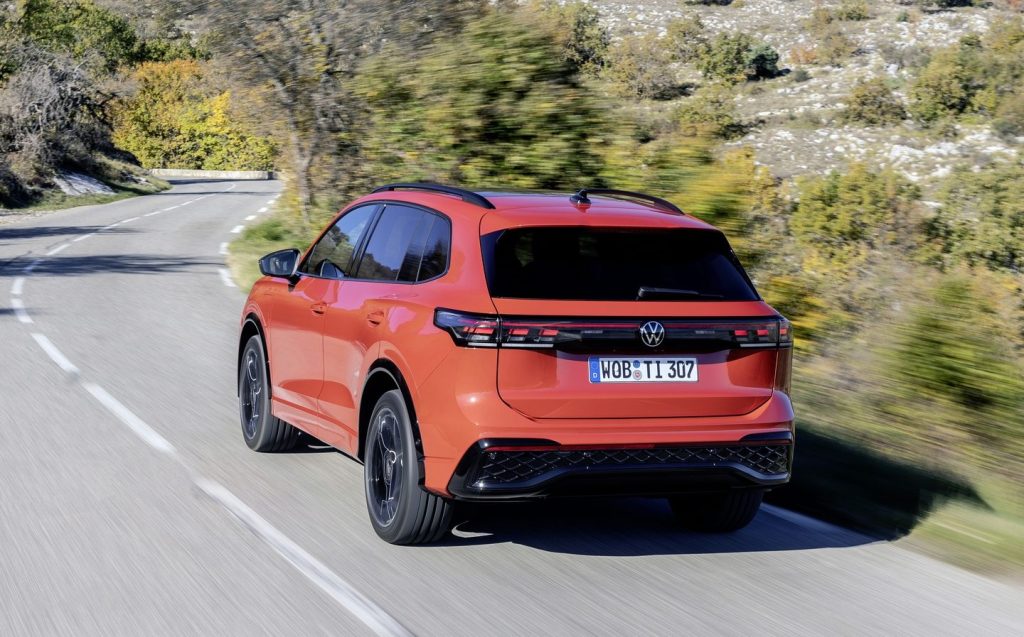
So, should you buy a hybrid (or even — shock — a diesel) Tiguan instead of an electric ID.4? It depends, as ever, on how and where you drive and if you have a driveway where you can charge up at night. If you can, and you fancy the flexibility for long journeys that liquid fuels allow, then the Tiguan e-Hybrid is well worth a look, and still offers the potential to cover most journeys on electric power.
That you’ll do so in great comfort, and the impressive practicality acts as icing and cherry. The road to electrification will be, unquestionably, bumpy but this e-Hybrid Tiguan might just smooth some of those bumps out a bit.
Related articles
- If you were interested in our review of the new Volkswagen Tiguan, you might like to read about the Golf R going electric
- You might also be interested to read our review of the Volkswagen ID.5 GTX
- Or keep an eye on the best-selling cars in the UK this year
Latest articles
- Aston Martin Valkyrie AMR-LMH hypercar hits track ahead of 2025 Le Mans challenge
- Porsche has begun testing the electric Cayenne
- Cupra Leon 272 eHybrid 2024 review: Bigger battery, better tech … but is it a Cupra?
- Porsche 911 GTS 2024 review: Hybrid heresy or more Stuttgart genius?
- Extended test: 2023 Vauxhall Astra Sports Tourer GS PHEV
- Ford Capri revival has faced a lot of flak… but are buyers put off? Here’s what visitors to the Festival of Speed had to say
- F1 2024 calendar and race reports: What time the next grand prix starts and what happened in the previous rounds
- ‘No timeframe’ for how long Volvo’s returning estate cars will be on sale in UK
- Kia Picanto 2024 review: Updates add spice to cute Korean city car


